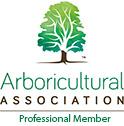Japanese Knotweed (Fallopia Japonica) and Invasive Species
Parklawn Tree Services are experienced and knowledgeable in the management and treatment of Japanese Knotweed as well as a variety of other invasive species such as Himalayan Balsalm (Impatiens glandulifera), Winter Heliotrope (Petasites fragrans), Giant Hogweed (Heracleum mantegazzianum), and Buddleia (Buddleja globosa) , having successfully completed a number of treatment programs for public bodies and state agencies including Irish Rail and several Local Authorities.
Japanese Knotweed is a perennial, which dies back to ground level during the winter, re-growing from rhizomes (roots) as shoots during the spring and summer. It was introduced to the British Isles during the 1800s as an ornamental plant, but due to its aggressive growth, propagation properties and lack of native competition, it can spread uncontrollably, having a detrimental effect on native low shrubs and plants as they struggle to compete for light and space. As native plant species are also the preferred food source for indigenous insect and animal populations, the knock-on effect to the local ecology is potentially devastating. For this reason Japanese Knotweed has been classified as an invasive species.











